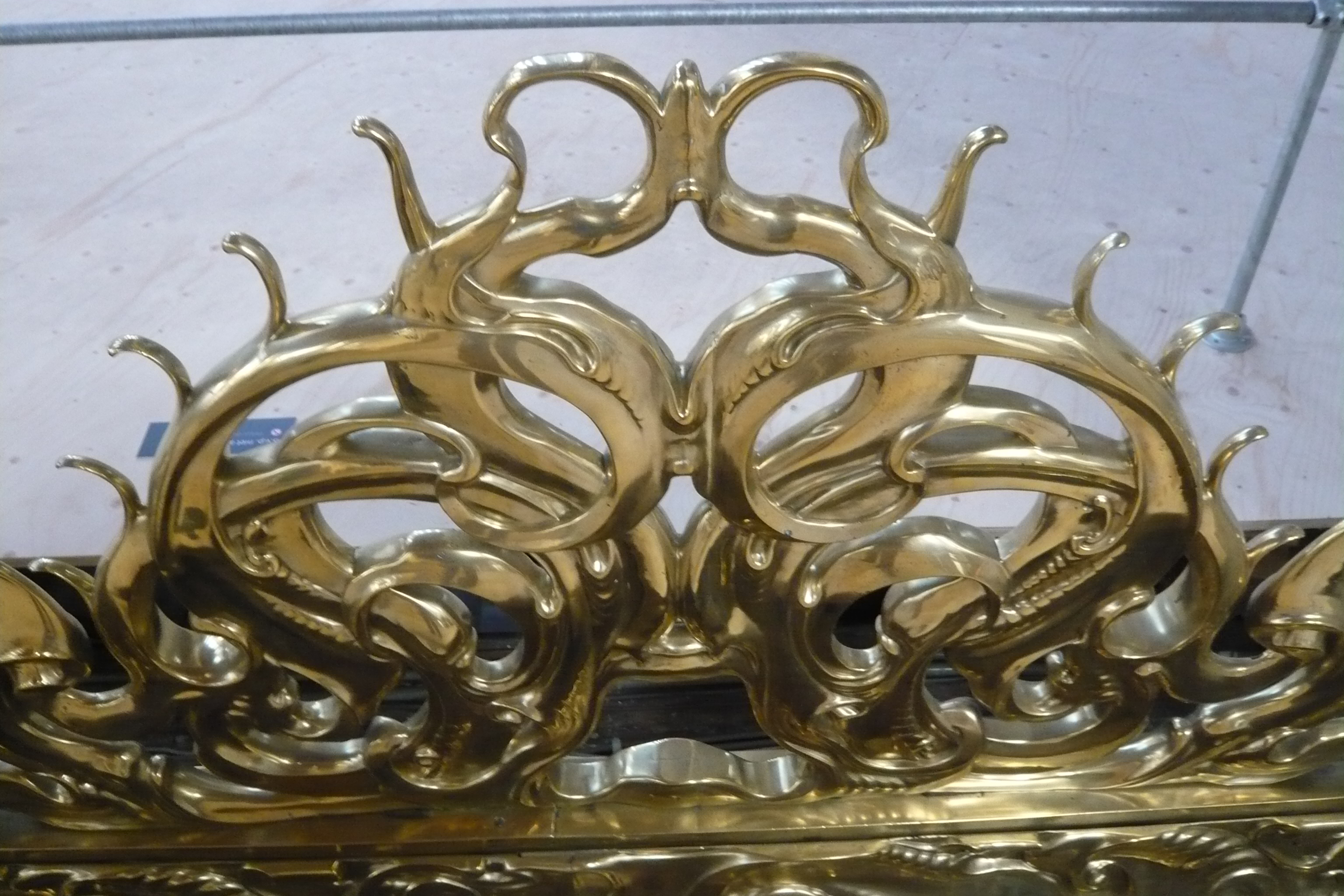Jan Lutma on:
[Wikipedia]
[Google]
[Amazon]
Janus, or Johannes Lutma the elder (


 He was a pupil of
He was a pupil of
in the
Emden
Emden () is an independent city and seaport in Lower Saxony in the northwest of Germany, on the river Ems. It is the main city of the region of East Frisia and, in 2011, had a total population of 51,528.
History
The exact founding date of Em ...
, ca. 1584 – Amsterdam
Amsterdam ( , , , lit. ''The Dam on the River Amstel'') is the Capital of the Netherlands, capital and Municipalities of the Netherlands, most populous city of the Netherlands, with The Hague being the seat of government. It has a population ...
, January 1669) was a well-known Dutch
Dutch commonly refers to:
* Something of, from, or related to the Netherlands
* Dutch people ()
* Dutch language ()
Dutch may also refer to:
Places
* Dutch, West Virginia, a community in the United States
* Pennsylvania Dutch Country
People E ...
silversmith
A silversmith is a metalworker who crafts objects from silver. The terms ''silversmith'' and ''goldsmith'' are not exactly synonyms as the techniques, training, history, and guilds are or were largely the same but the end product may vary gre ...
.Biography

 He was a pupil of
He was a pupil of Paulus van Vianen
Paul van Vianen or Paulus Willemsz van Vianen (1570–1614) was a silversmith, medallist and sculptor of the Northern Netherlands, trained in Northern Mannerism but then important in developing the Baroque auricular style with his brother Ada ...
who was known for his auricular style
The auricular style or lobate style (Dutch: ''Kwabstijl'', German: ''Ohrmuschelstil'') is a style of ornamental decoration, mainly found in Northern Europe in the first half of the 17th century, bridging Northern Mannerism and the Baroque. The ...
in silver, so-called for its smooth, ear-like forms. After spending time in Paris
Paris () is the capital and most populous city of France, with an estimated population of 2,165,423 residents in 2019 in an area of more than 105 km² (41 sq mi), making it the 30th most densely populated city in the world in 2020. ...
(ca. 1615), Lutma came to Amsterdam in 1621 where he got engaged on the 31rst of March 1623 to Mayken Roelants, and on the 18th of May 1638 to Saera de Bie.Johannes Lutmain the
RKD
The Netherlands Institute for Art History or RKD (Dutch: RKD-Nederlands Instituut voor Kunstgeschiedenis), previously Rijksbureau voor Kunsthistorische Documentatie (RKD), is located in The Hague and is home to the largest art history center i ...
He was a friend of Rembrandt
Rembrandt Harmenszoon van Rijn (, ; 15 July 1606 – 4 October 1669), usually simply known as Rembrandt, was a Dutch Golden Age painter, printmaker and draughtsman. An innovative and prolific master in three media, he is generally co ...
, who later etched a portrait of him. The portrait shown here was painted by Jacob Adriaensz Backer
Jacob Adriaensz Backer (1608 – 27 August 1651) was a Dutch Golden Age painter. He produced about 140 paintings in twenty years, including portraits, religious subjects, and mythological paintings. In his style, he was influenced by Wybrand d ...
. Lutma is best known for his choir-panel in the New Church of Amsterdam. A number of the designs of Lutma were later published in 4 series of prints, mainly by his sons Jacob
Jacob (; ; ar, يَعْقُوب, Yaʿqūb; gr, Ἰακώβ, Iakṓb), later given the name Israel, is regarded as a patriarch of the Israelites and is an important figure in Abrahamic religions, such as Judaism, Christianity, and Islam ...
and Johannes Lutma the Younger
Johannes is a Medieval Latin form of the personal name that usually appears as "John" in English language contexts. It is a variant of the Greek and Classical Latin variants (Ιωάννης, '' Ioannes''), itself derived from the Hebrew name '' Ye ...
, more often known as Jan Lutma. Jan developed a distinct, if not very influential, technique of stipple engraving
Stipple engraving is a technique used to create tone in an intaglio print by distributing a pattern of dots of various sizes and densities across the image. The pattern is created on the printing plate either in engraving by gouging out the dots ...
by making dots on the plate with a punch and hammer. Griffiths, Antony, ''Prints and Printmaking: An Introduction to the History and Techniques'', p 78, British Museum Press (in UK), 2nd ed., 1996
The Rijksmuseum
The Rijksmuseum () is the national museum of the Netherlands dedicated to Dutch arts and history and is located in Amsterdam. The museum is located at the Museum Square in the borough of Amsterdam South, close to the Van Gogh Museum, the Sted ...
of Amsterdam has several works of Johannes Lutma in its collection: two silver saltcontainers, partially gilded, a silver drinking-bowl and a silver pitcher and bowl with sea-motives.
In the Amsterdam neighbourhood De Pijp
De Pijp (; English: The Pipe) is a neighbourhood of Amsterdam, Netherlands. It is located directly south of Amsterdam's city centre and it is part of the borough Amsterdam-Zuid, in a part of the city known as the Old South ( ''Oud Zuid''). It is se ...
, as well as Schoonhoven
Schoonhoven () is a city and former municipality in the western Netherlands, in the province of South Holland. Since 2015 it has been a part of the municipality of Krimpenerwaard, before it had been an independent municipality.
The former municipa ...
, there are streets named after him.
References
{{DEFAULTSORT:Lutma, Johannes Dutch silversmiths Dutch Golden Age artists 1580s births 1669 deaths People from Emden 17th-century Dutch artists